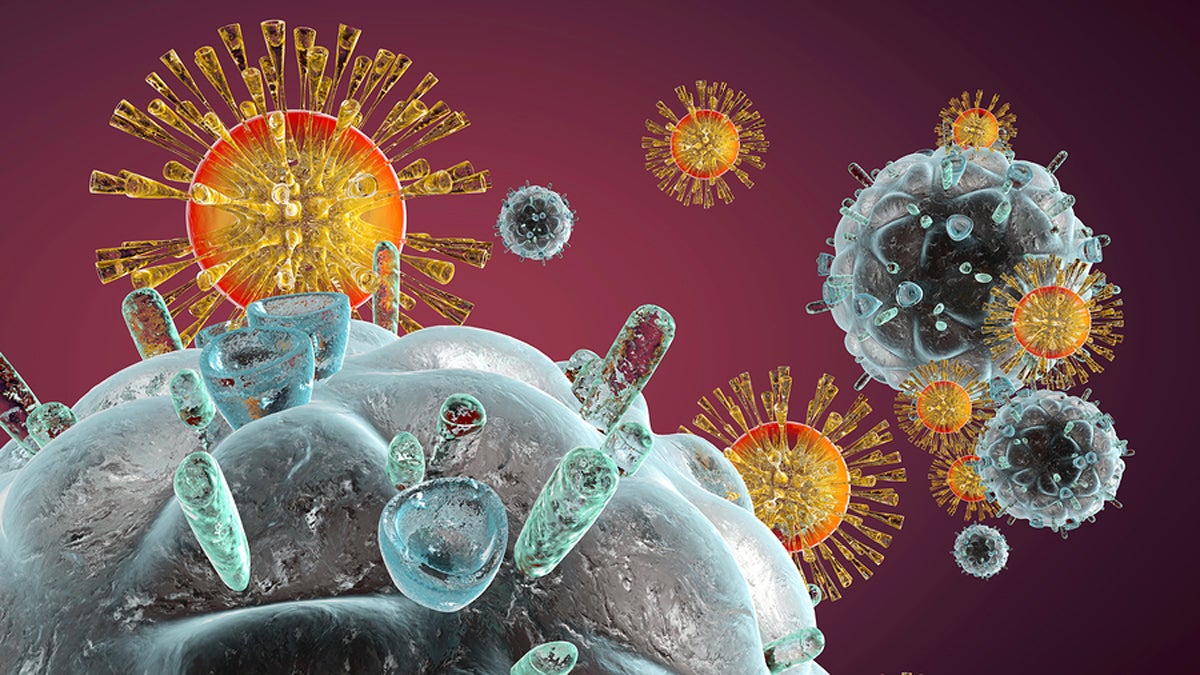With scientific breakthrough, researchers see AIDS cure on horizon

3D illustration of immune system cells attacking a HIV virus (Spectral-Design/Bigstock)
In a significant scientific breakthrough, Temple University researchers have successfully removed HIV from human immune cells.
The study included a “humanized” model in which human cells were transplanted into mice and then infected with HIV. Researchers used gene editing technology to remove HIV DNA from the mice.
“Once HIV infects human cells, its genome incorporates in the whole cells, said Kamel Khalili, chair of Neuroscience at Temple University. “And that’s a major problem for the treatments of the HIV-infected individuals. The current therapy that’s in the clinic is surpressing virus replication but it doesn’t eliminate.”
Khalili says that after dealing with the AIDS epidemic for more than 30 years, researchers have learned a lot about the virus. “Unfortunately we have been unable to eliminate the virus and there is obviously no reliable and good vaccine for the prevention of the infection,” he added.
But Khalili expects good news in the future: he anticipates a cure for AIDS within the next 10 years. The next stage will likely be to repeat the study in primates, and then finally a clinical trial with human patients.
The results were recently published in the journal Molecular Therapy.
WHYY is your source for fact-based, in-depth journalism and information. As a nonprofit organization, we rely on financial support from readers like you. Please give today.




